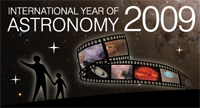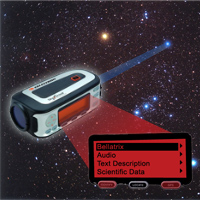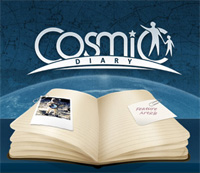ESA and the International Year of Astronomy 2009
The General Assembly of the United Nations has declared 2009 as the 'International Year of Astronomy'. This global programme was initiated by the International Astronomical Union and UNESCO with the aim of helping the citizens of the world to rediscover their place in the Universe by reconnecting to the day- and night-sky. ESA will join a network of 24 organisational associates and over 130 countries, reaching over 90 per cent of the world's population.
What ESA can bring to the International Year of Astronomy
The vision for the International Year of Astronomy is the realisation that astronomy and other fundamental sciences have a profound impact on our daily lives. ESA has already made an outstanding contribution to the field of astronomy, and space science, and continues to push technological frontiers to deepen our understanding of the Universe. Astronomical spacecraft complement observations made from ground-based observatories, this requires a global effort. ESA is already a part of an international network that promotes the value of science and astronomy as a unifying activity for humanity. The vast network of astronomical organisations joining together for the International Year of Astronomy will be one of the legacies that will last far beyond 2009.
Herschel & Planck – key European contributions to astronomy
The International Year of Astronomy will see the launch of two major astronomical spacecraft, Herschel and Planck. An Arianne-5 launcher will carry both spacecraft into space during 2009.
Herschel, will be the largest ever infrared space observatory and will open up a virtually unexplored part of the spectrum, far infrared to sub-millimetre wavelengths, which cannot be well observed from the ground. Herschel will observe some of the coolest and most distant objects in the Universe to build understanding of stellar and galaxy formation and evolution.
Planck is Europe's first mission to scan the entire sky and produce maps of the Cosmic Microwave Background, the remnant radiation that filled the Universe immediately after the Big Bang. The aim of Planck is to provide answers to some of the biggest questions in science today such as: How did the Universe begin? How did it evolve to the state that we can observe today and how will it continue to evolve in the future?
ESA International Year of Astronomy Projects:
The Planck Dome – Looking back to the dawn of time
Walk into the 10m Planck Dome and see the sky as it will be observed by Planck. A model of the spacecraft takes centre stage in the middle of the dome, demonstrating how this surveying satellite will scan the sky. In tandem, a high-tech simulation of the Cosmic Microwave Background is projected onto the dome. This project is an initiative of François Bouchet on behalf of the French representatives in the HFI Consortium, and was created with the support of CNES, CNRS, ESA and Thales Alenia Space. During 2009 the Planck Dome will travel to a number of venues around France.
The Groningen Discovery Truck – bringing the marvels of the infrared closer to home
The Groningen Discovery Truck is a mobile, interactive, discovery exposition bringing science to students and the general public in the Netherlands. Since mid-2008, the exhibit has included a section with the theme of “Discover the Invisible Universe” featuring the Herschel mission. This project was developed by a team of astronomers led by Peter Barthel and Gijs Verdoes Kleijn from the Rijksuniversiteit Groningen, The Netherlands, and was awarded the Academische Jaarprijs for 2008 – awarded annually in The Netherlands for excellence in science communication.
Sterne und Weltraum – Herschel and Planck special issue
ESA together with the respected German astronomy publication Sterne und Weltraum have produced a special edition of the magazine dedicated to Herschel and Planck. This issue contains background material on both missions, as well as a DVD that features what can be seen in the infrared sky and explains how detection of the Cosmic Microwave Background is important to astronomers. This special edition of Sterne und Weltraum has been distributed to all German speaking schools.
Celestron SkyScout – Must-have tool for new astronomers
The Celestron SkyScout has been selected as an official product of the International Year of Astronomy 2009. For astronomers exploring the night sky for the first time the SkyScout is a revolutionary device that makes it easy to get started. Point the SkyScout to any star in the night sky and hold your eye to the view finder to instantly identify what you are looking at with the help of an audio guide and/or an on-screen text description.
For this enhanced SkyScout ESA has provided descriptions of deep-sky objects visible to the naked eye that have also been viewed by space-borne observatories. The user will discover how knowledge about these distant objects is pieced together with the help of telescopes in space and will discover that there is really more than meets the eye.
Cosmic Diary – The life of an astronomer
The Cosmic Diary is one of eleven cornerstone projects that are taking place around the world during the International Year of Astronomy. Each cornerstone project is centred on a specific theme and the Cosmic Diary is all about what it is like to be an astronomer. Professionals from five continents across the globe will blog in text and images about their life, families, friends, hobbies and interests, as well as their work. A number of ESA scientists are among the professionals taking part and you will able to follow their blogs on the Cosmic Diary web pages.
Last Update: 1 September 2019






